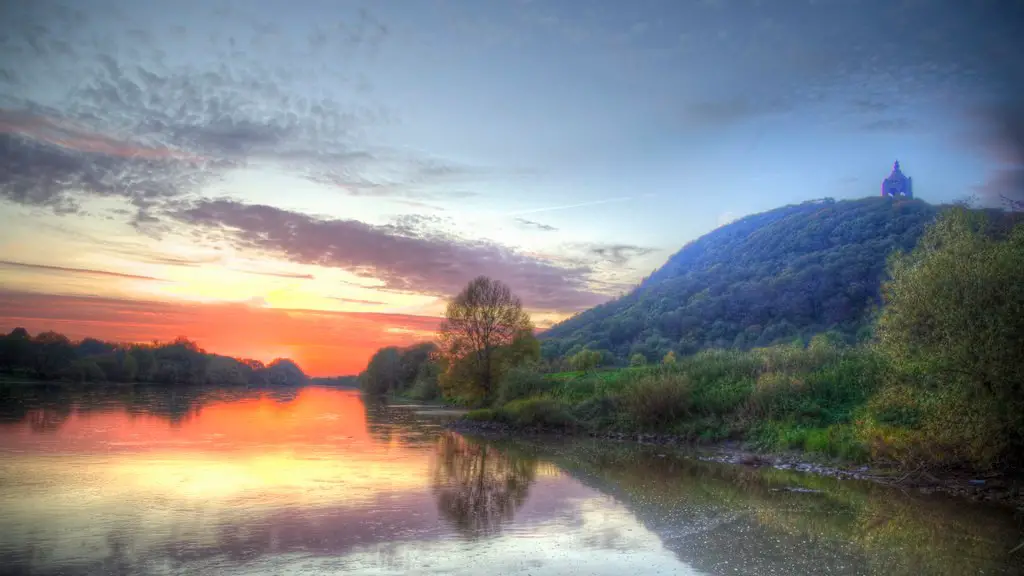The Yangtze River, China’s Longest and Most Important Waterway
When you think of rivers in China, the Yangtze River is likely to come to mind. Stretching 6,300 km (3,915 miles), it is the longest river in the country and has played an immense role in Chinese history, culture, and economy.
Known as Chang Jiang (from a common local dialect pronunciation) in Mandarin Chinese, the Yangtze originates in the glaciers of the Qinghai-Tibet Plateau and flows eastward through six provinces and one city until it terminates in the East China Sea.
Its basin encompasses 817,600 km2 (314,000 sq mi). Feeding the Yangtze is the largest network of tributaries in China and its tributaries, numerable large and small, produce about 18% of the total runoff in China.
The construction of the Three Gorges Dam, which began in 1994, slowed down the flow of the river and dramatically affects its biodiversity. Current estimates suggest that the projects’ impact on aquatic life, such as the Chinese Sturgeon, will be devastating. The impacts of the dam also put significant pressure on the livelihood of millions of inhabitants of the area, who depend on the river for their livelihoods.
Nearly 300 million people inhabit the Yangtze basin and account for one-third of China’s population. Their activities, such as shipping and sand extraction, also add to the already polluted waters of the Yangtze. To face this problem, China has implemented some measures, the most important being the Yangtze River Law, which was passed in 1991.
Apart from the impressive ecological importance of the Yangtze, it has been one of the most important commercial waterways in the world.It is not only used for cargo transportation, but it also has an immense importance for tourism, as it flows through some of the most breathtaking areas in China.
Yangtze in Economic Terms
The Yangtze River has been a major highway since ancient times and its importance continues to this day. It connects many historically important commercial cities, such as Wuhan and Nanjing, and many of the ports in China are located along the river. The river has never been more important than during the industrialization period of economic growth in China, as almost all of the cargo vessels transporting goods from port to port must pass through the Yangtze.
As with any river, the natural processes of sedimentation can make parts of the river shallower than intended for ships. That is why China has invested heavily in manpower and engineering skills to build locks and dams. The construction of locks and dams along the Yangtze has enabled ships to bypass the unnavigable points and also enable ships to ascend or descend the gradient or flow of the river. Additionally, the locks and dams reduce the risk of floods to the nearby lands and ensure efficient navigation.
In the modern era, the importance of the Yangtze river has not diminished. International trade has grown dramatically since the 1980s and cargo vessels still rely heavily on the Yangtze River. Other forms of transportation that use the Yangtze are passenger ferries and tourist cruises.
Environmental Impact of the Yangtze
The Yangtze is an immensely important ecosystem, containing a vast variety of fauna and flora. It is home to 22,000 animal species (twice as many as the Amazon), 65 commercially valuable fish, and 20 endangered species, such as the finless porpoise, Chinese alligator, and Chinese paddlefish.
Unfortunately, the river’s environment has also been significantly affected by population increases and industrialization. Pollution from factories, urban runoff, and agricultural activities near the river all contribute to the poor water quality and thus to the decreased abundance of aquatic life.
In recent years, China has implemented several measures to address this problem. For example, the Green Water Project was launched in 1998 and aimed to reduce pollution in the Yangtze. The project consists of several measures, including restricting the use of chemical fertilizers and pesticides in agriculture, increasing the collection of pollutants in factories, and creating green engineering solutions to reduce the amount of hazardous waste.
The measures implemented by the government, while effective in some areas, are still insufficient to adequately tackle the pollution of the Yangtze. In some areas, the pollution has become so severe that aquatic life is threatened and warning labels have been placed around the river to warn inhabitants about the danger of swimming and fishing in the river.
The Yangtze River Bridge – Connecting the East and West
One of the most impressive landmarks of the Yangtze River is the Yangtze River bridge. It is a combined road and rail bridge that runs from Nanjing to Wuhan. Opened in 1968, it was the first bridge across the Yangtze range, linking the east and west sides of the country, and was the longest river bridge in the world at the time.
The bridge is 2,476 m (8,122 ft) in length and features four lanes of automobile and railroad traffic on the lower deck and six lanes of traffic on the upper deck. This bridge has allowed the flow of trade and transport between major Chinese cities to increase and has become an essential part of business. Despite the impressive engineering feat of building this bridge, some people were skeptical of the safety of the bridge because of the fast currents and potential for severe flooding of the Yangtze.
Today, forty-nine years later, the bridge is still in use and is considered a symbol of the development in the region. This bridge is a testament to the incredible engineering feats that have been completed on the Yangtze River.
The Importance of Tourism
The most popular activity related to the Yangtze River is tourism. The Yangtze River is recognized as one of the most beautiful rivers in the world, with impressive landscapes along its length. The most popular tourist attractions are in the Three Gorges area, which is located near the river’s middle reaches. Tourists visit the area to marvel at the steep cliffs and the magnificent views of the river. This region is especially popular among Chinese people who want to experience the stunning views of the river and enjoy the unique culture of the local inhabitants.
The beauty of the Yangtze has led to an increased demand for cruise ships and ferries along the river. China now has a wide variety of cruise ships offering various services and packages for tourists. These cruises are often used as a way for Chinese people to reconnect with the culture and history of their ancestors who used to rely on the river for their livelihood.
The Yangtze River is not only a crucial part of the Chinese economy, but also a great natural landmark. The government of China has been attempting to address the need to protect the river and its surrounding environment, while also encouraging the development of tourism along its shores.
China’s Water Policies
Over the last few decades, China has enforced several policies in order to protect the environment of the Yangtze River, most of which revolve around the national water policy. In 2015 the Chinese government passed the Water Law, which made it illegal to pollute or overuse the land surrounding the river. The Water Law has helped to improve the river’s water quality and has encouraged people to be more aware of their usage of the river. It has also allowed for the development of new infrastructure, such as dams and water pipelines, that are designed to help manage water flow and reduce pollution.
Additionally, the government has implemented several public welfare initiatives such as the Three Gorges Dam project, which aims to reduce flooding, develop tourism, and generate hydroelectric power. This project has been met with criticism from environmentalists, who worry about the consequences of Damming a river as large as the Yangtze. Despite this criticism, the project is expected to generate much-needed jobs and revenue for the region.
In addition to the Three Gorges Dam, China is experimenting with a plan to divert water from the Yangtze River basin to arid western parts of the country. The aim of this project is to provide much-needed water to the people of western China, while also improving the river’s water quality.
The Yangtze River is an integral part of the Chinese economy, culture, and history. It is essential that the Chinese government and citizens continue to work together to protect this invaluable resource for future generations.
The Impact of Climate Change
One worrying effect of climate change on the Yangtze River is an increase in floods, leading to economic losses and social upheaval. climate change is also causing increased levels of water evaporation, which can lead to drought in certain parts of the river. Despite the current policies in place to protect the river, they are inadequate to protect the river from the effects of climate change.
The Chinese government has announced plans to develop a Yangtze River Basin Climate Change Adaptation Plan to protect the basin from the adverse effects of climate change. This plan will focus on minimizing the risk of climate impacts on the region, as well as promoting green development along the river.
The Yangtze River is home to numerous species of flora and fauna, some of which are endangered. As climate change continues to adversely affect the area, it is essential that the government, local businesses, and all stakeholders work together to protect the river from further destruction.
Conclusion
The Yangtze River is the longest river in China and is considered one of the most important waterways in the world. It has been a mainstay of the Chinese economy since ancient times and continues to provide jobs and revenue to an estimated 300 million people living in the river basin. Despite the impressive ecological importance of the river and its surrounding area, a number of human activities, coupled with climate change, pose serious risks to the environment and thus to the livelihoods of the people living there. To face this problem, China has implemented some measures, but they are still insufficient to adequately tackle the river’s pollution.





